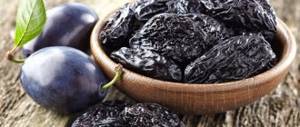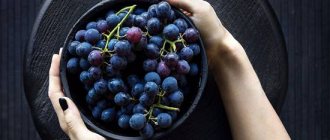General rules
Diet for diseases of the gastrointestinal tract is the most important factor in complex treatment, and in some cases it is the main component of treatment of the stomach and intestines.
Since the gastrointestinal tract is represented by a number of organs and various sections of the intestine, there are many diseases of the gastrointestinal tract, occurring in acute/chronic form, manifested by various clinical symptoms. Accordingly, therapeutic nutrition also differs. Thus, for gastroenterological diseases ( gastritis with high/low acidity, peptic ulcer , gastroduodenitis ), therapeutic Tables No. 1 , 2 and their varieties are prescribed. For diseases of the organs of the hepabiliary system (liver, gall bladder, bile ducts) and pancreas, various options for dietary Table No. 5 .
The main diets for intestinal diseases are therapeutic Tables No. 3 and 4 , which are presented in several options (A, B, C). Among intestinal diseases, enteritis (acute/chronic diseases of the small intestine) and colitis (large intestine) are distinguished, occurring both independently and in combination (enterocolitis) with various functional disorders of the gastrointestinal tract. It is the type of disease, the form of the disease and functional disorders that determine what diet will be prescribed for intestinal disease.
This type of treatment table allows you to individualize therapeutic nutrition through correction (adding/removing a number of food products, changing the chemical composition and energy value of the diet, type of culinary processing, consistency of ready-made dishes, diet).
It is especially important for inflammation of the intestines and gastrointestinal tract that therapeutic nutrition ensures maximum sparing of the mucous membrane, since in the inflamed intestine/organ any inadequate mechanical/physical or chemical effect of food on the mucous membrane contributes to an exacerbation of the process. The basic principles of dietary nutrition for a diseased gastrointestinal tract/intestines are:
- providing patients with a complete and balanced set of nutritional macro/micronutrients in accordance with physiological norms and characteristics of the course of the disease;
- protecting the gastrointestinal mucosa from the effects of various types of negative factors (mechanical, chemical, physical);
- adherence to diet;
- reduction of the inflammatory process, restoration of function and natural intestinal biocenosis.
The prevailing functional disorders of the intestines are of great importance in choosing a diet. diarrhea of varying intensity, bloating, and flatulence occur , Diet No. 4 are prescribed , depending on the stage of the disease and the severity of clinical symptoms.
For example, for pain and cramps in the abdomen caused by increased gas content and intestinal distension, dietary Table 4A , the distinctive feature of which is to limit the consumption of simple carbohydrates, which enhance fermentation processes. At the same time, the diet contains an increased amount of protein component (120 g) and a low content of fat (50 g) and carbohydrates (150-140 g), the total calorie content of the daily diet is 1600-1700 kcal/day.
Dishes are prepared boiled or steamed and pureed. No later than 2 weeks later, the patient is transferred to higher-calorie treatment Tables 4B and then 4B , which are less gentle and more varied in the range of permitted products.
For colitis and problems with bowel movements ( constipation ), treatment Table No. 3 , which allows you to normalize impaired intestinal functions. The diet is physiologically complete, contains an increased amount of dietary fiber and macroelements, which are found in large quantities in vegetables, cereals, fresh fruits, dried fruits, and dairy products. Therapeutic nutrition involves the consumption of cold first courses, sweets and sweet dishes, and carbonated drinks.
At the same time, products that promote fermentation/rotting processes, stimulate the secretion of the digestive organs and irritate the intestinal mucosa (horseradish, mustard, hot spices) are excluded from the diet. When compiling a diet, it is important to include foods that enhance intestinal motility and eliminate constipation . These are products containing simple carbohydrates (honey, jam, sugar, syrups), salt and organic acids (salted, pickled and pickled vegetables, salted fish, fermented milk drinks, canned snack foods, fruit drinks), dietary fiber (whole bread, bran, dried fruits , legumes, nuts, cereals, raw vegetables), prone to swelling (bran, fiber, seaweed), cold dishes (beetroot soup, okroshka, cold jellied dishes, jellied meat, carbonated drinks and ice cream).
For stomach ulcers and constipation Table No. 1 will be the main one , but with an increase in the diet of boiled vegetables (zucchini, carrots, beets), prepared in the form of puree, well-cooked dried fruits, and refined vegetable oil. Table No. 5 is prescribed , but the content of dietary fiber and magnesium in the diet is increased (cereal/bran bread, oatmeal, buckwheat, pearl barley, vegetable/fruit juices, fruits, honey, natural vegetables).
In case of constipation against the background of exacerbation of chronic intestinal diseases, a gentle Table No. 4B , and then No. 4B ; gentle peristalsis stimulants are included in the diet of patients (vegetable juices, cold fruit drinks on an empty stomach, baked apples, pureed plums, carrots, beets , cabbage with the addition of vegetable oil).
Intestinal bleeding from the higher/lower parts of the intestine (rectum, sigmoid colon) requires special attention. The causes may be intestinal diverticulosis , ischemic intestinal lesions, colon tumors/polyps, infectious colitis, hemorrhoids /anal fissures, intestinal tuberculosis , ulcerative colitis and others.
Stopping bleeding and subsequent treatment of the disease, including the prescription of dietary nutrition in such cases, is possible only after identifying the source of bleeding and a clear diagnosis.
Nutrition for stomach ulcers
Those with ulcers should follow diet No. 1, which will promote the healing of erosions and restoration of the organ mucosa. At the same time, it is important for a person to stop drinking alcohol and eating hot or too cold food. You should also avoid taking salt, pepper and hot sauces.
You need to eat fractionally (5-6 times a day in small portions). The daily calorie content of meals should be 2500 kcal.
The first part of this therapeutic diet should be porridge or soups with vegetables. You can fill them with cream.
For the second course, if you have an ulcer, you can cook baked fish or lean meat. Always use light salads and vegetable casseroles as a side dish.
In order not to overload the stomach with erosions, it is better for those with ulcers to avoid taking mushrooms, coffee, soda and canned food. These foods may cause nausea and vomiting. Instead, it is better to enrich your diet with dairy products that are beneficial for ulcers.
Authorized Products
The diet for diseases of the gastrointestinal tract includes the following in the diet:
- Dried/day-old wheat bread (highest grade), sponge cake and dry biscuits.
- Well-boiled coarse cereals (excluding millet, corn, barley, pearl barley), boiled vermicelli, chopped pasta, noodles, which can be cooked with the addition of water.
- Low-fat varieties of red meat and lean fish in whole pieces and in the form of steamed cutlets and soufflés.
- Soups cooked in recycled meat/fish broth with the addition of well-cooked and mashed cereals and vegetables (potatoes, zucchini, carrots, cauliflower, green peas, asparagus, beets), meatballs.
- Allowed vegetables finely chopped as a side dish or in the form of stews and cutlets. It is allowed to add finely chopped garden herbs.
- Cream/milk as an additive to dishes.
- Fermented milk products (kefir, acidophilus, yogurt) in any quantities. Cottage cheese or dishes prepared from it should be present daily. The cheese is mild. Eggs (up to 2 eggs per day) soft-boiled, steamed omelettes, butter can be eaten with bread or added to dishes.
- Appetizers (doctor's sausage, soaked herring, jellied fish, mild cheese, sturgeon caviar, jellied tongue). Milk and sour cream sauces with the addition of dill/parsley are allowed.
- Raw ripe fruits after removing the peel (apples, pears raw, stewed/baked, raspberries, strawberries in the form of jelly, jelly, compotes). From confectionery products - marshmallows, marshmallows, meringues, jam, fruit marmalade, preserves.
- Diluted fruit/vegetable juices (except cabbage/grape juice), rosehip infusion, weak tea, cocoa with added milk.
Table of permitted products
| Proteins, g | Fats, g | Carbohydrates, g | Calories, kcal | |
Vegetables and greens | ||||
| zucchini | 0,6 | 0,3 | 4,6 | 24 |
| cabbage | 1,8 | 0,1 | 4,7 | 27 |
| cauliflower | 2,5 | 0,3 | 5,4 | 30 |
| potato | 2,0 | 0,4 | 18,1 | 80 |
| carrot | 1,3 | 0,1 | 6,9 | 32 |
| parsley | 3,7 | 0,4 | 7,6 | 47 |
| beet | 1,5 | 0,1 | 8,8 | 40 |
| dill | 2,5 | 0,5 | 6,3 | 38 |
| green beans | 2,8 | 0,4 | 8,4 | 47 |
Fruits | ||||
| quince | 0,6 | 0,5 | 9,8 | 40 |
| oranges | 0,9 | 0,2 | 8,1 | 36 |
| pomegranate | 0,9 | 0,0 | 13,9 | 52 |
| pears | 0,4 | 0,3 | 10,9 | 42 |
| dogwood | 1,0 | 0,0 | 10,5 | 44 |
| tangerines | 0,8 | 0,2 | 7,5 | 33 |
| apples | 0,4 | 0,4 | 9,8 | 47 |
Berries | ||||
| blueberry | 1,1 | 0,4 | 7,6 | 44 |
Nuts and dried fruits | ||||
| dried pears | 2,3 | 0,6 | 62,6 | 249 |
Cereals and porridges | ||||
| buckwheat (kernel) | 12,6 | 3,3 | 62,1 | 313 |
| semolina | 10,3 | 1,0 | 73,3 | 328 |
| oat groats | 12,3 | 6,1 | 59,5 | 342 |
| cereals | 11,9 | 7,2 | 69,3 | 366 |
| white rice | 6,7 | 0,7 | 78,9 | 344 |
Flour and pasta | ||||
| pasta | 10,4 | 1,1 | 69,7 | 337 |
| milk pasta | 11,5 | 2,9 | 67,1 | 345 |
| noodles | 12,0 | 3,7 | 60,1 | 322 |
Bakery products | ||||
| white bread crackers | 11,2 | 1,4 | 72,2 | 331 |
Confectionery | ||||
| jam | 0,3 | 0,2 | 63,0 | 263 |
| jam | 0,3 | 0,1 | 56,0 | 238 |
| marshmallows | 0,8 | 0,0 | 78,5 | 304 |
| fruit and berry marmalade | 0,4 | 0,0 | 76,6 | 293 |
| meringues | 2,6 | 20,8 | 60,5 | 440 |
| paste | 0,5 | 0,0 | 80,8 | 310 |
Raw materials and seasonings | ||||
| dried bird cherry | 8,4 | 0,0 | 16,8 | 101 |
Dairy | ||||
| skim milk | 2,0 | 0,1 | 4,8 | 31 |
| sour cream | 2,8 | 20,0 | 3,2 | 206 |
| acidophilus | 2,8 | 3,2 | 3,8 | 57 |
Cheeses and cottage cheese | ||||
| cheese | 24,1 | 29,5 | 0,3 | 363 |
| cottage cheese 0.6% (low fat) | 18,0 | 0,6 | 1,8 | 88 |
Meat products | ||||
| boiled beef | 25,8 | 16,8 | 0,0 | 254 |
| boiled veal | 30,7 | 0,9 | 0,0 | 131 |
| rabbit | 21,0 | 8,0 | 0,0 | 156 |
Bird | ||||
| boiled chicken | 25,2 | 7,4 | 0,0 | 170 |
| turkey | 19,2 | 0,7 | 0,0 | 84 |
Fish and seafood | ||||
| Red caviar | 32,0 | 15,0 | 0,0 | 263 |
| black caviar | 28,0 | 9,7 | 0,0 | 203 |
Oils and fats | ||||
| butter | 0,5 | 82,5 | 0,8 | 748 |
Non-alcoholic drinks | ||||
| mineral water | 0,0 | 0,0 | 0,0 | — |
| green tea | 0,0 | 0,0 | 0,0 | — |
| black tea | 20,0 | 5,1 | 6,9 | 152 |
Juices and compotes | ||||
| Orange juice | 0,9 | 0,2 | 8,1 | 36 |
| Cherry juice | 0,7 | 0,0 | 10,2 | 47 |
| Strawberry juice | 0,6 | 0,4 | 7,0 | 31 |
| tangerine juice | 0,8 | 0,3 | 8,1 | 36 |
| carrot juice | 1,1 | 0,1 | 6,4 | 28 |
| tomato juice | 1,1 | 0,2 | 3,8 | 21 |
| pumpkin juice | 0,0 | 0,0 | 9,0 | 38 |
| Apple juice | 0,4 | 0,4 | 9,8 | 42 |
| * data is per 100 g of product | ||||
Diet for stomach pain
In most cases, stomach pain is caused by an exacerbation of gastritis or ulcers. In such a state, a person needs to enrich his menu with easily digestible foods that do not cause irritation to the walls of the organ. Thus, vegetable purees, biscuits, and boiled fish will be useful. You can also eat a protein omelet, porridge with water (oatmeal, buckwheat), and drink rosehip decoction.
Several times a week you are allowed to eat boiled meat, cottage cheese, honey and baked apples. Every day your diet should include soups and low-fat fermented milk products.
Remember! If stomach pain is accompanied by vomiting blood and heartburn, this may indicate an increase in erosions and internal bleeding. In such a condition, it is important to consult a doctor as soon as possible. Uncontrolled treatment can be dangerous.
Fully or partially limited products
The diet of treatment tables for diseases of the gastrointestinal tract includes the following exceptions:
- Fatty meats/fish/poultry, smoked meats, canned meat/fish, meat products with the exception of cooked sausages.
- Products that stimulate the secretion of the gastrointestinal tract - extractive substances (concentrated and fatty meat/fish broths).
- Products containing essential oils (garlic, radish, celery, onion, spinach, radish).
- Products/dishes that enhance the processes of fermentation and rotting - rye bread, legumes, vegetables with coarse fiber, beer, fresh wheat bread.
- Spicy, salty, blue cheeses.
- Barley, millet, corn and pearl barley.
- Cooking/animal fat, margarine, mayonnaise.
- Ice cream, chocolate, cakes, grape juice.
Table of prohibited products
| Proteins, g | Fats, g | Carbohydrates, g | Calories, kcal | |
Vegetables and greens | ||||
| vegetables legumes | 9,1 | 1,6 | 27,0 | 168 |
| swede | 1,2 | 0,1 | 7,7 | 37 |
| cucumbers | 0,8 | 0,1 | 2,8 | 15 |
| parsnip | 1,4 | 0,5 | 9,2 | 47 |
| parsley (root) | 1,5 | 0,6 | 10,1 | 49 |
| radish | 1,2 | 0,1 | 3,4 | 19 |
| white radish | 1,4 | 0,0 | 4,1 | 21 |
| turnip | 1,5 | 0,1 | 6,2 | 30 |
| celery | 0,9 | 0,1 | 2,1 | 12 |
| horseradish | 3,2 | 0,4 | 10,5 | 56 |
| garlic | 6,5 | 0,5 | 29,9 | 143 |
| spinach | 2,9 | 0,3 | 2,0 | 22 |
| sorrel | 1,5 | 0,3 | 2,9 | 19 |
Fruits | ||||
| bananas | 1,5 | 0,2 | 21,8 | 95 |
| melon | 0,6 | 0,3 | 7,4 | 33 |
Berries | ||||
| grape | 0,6 | 0,2 | 16,8 | 65 |
Nuts and dried fruits | ||||
| dried fruits | 2,3 | 0,6 | 68,2 | 286 |
Cereals and porridges | ||||
| pearl barley | 9,3 | 1,1 | 73,7 | 320 |
| Wheat groats | 11,5 | 1,3 | 62,0 | 316 |
| millet cereal | 11,5 | 3,3 | 69,3 | 348 |
| barley grits | 10,4 | 1,3 | 66,3 | 324 |
Flour and pasta | ||||
| pasta | 10,4 | 1,1 | 69,7 | 337 |
Bakery products | ||||
| vysivkovy bread | 9,0 | 2,2 | 36,0 | 217 |
| Rye bread | 6,6 | 1,2 | 34,2 | 165 |
Confectionery | ||||
| candies | 4,3 | 19,8 | 67,5 | 453 |
| cookie | 7,5 | 11,8 | 74,9 | 417 |
| butter cookies | 10,4 | 5,2 | 76,8 | 458 |
Ice cream | ||||
| ice cream | 3,7 | 6,9 | 22,1 | 189 |
Cakes | ||||
| cake | 4,4 | 23,4 | 45,2 | 407 |
Raw materials and seasonings | ||||
| seasonings | 7,0 | 1,9 | 26,0 | 149 |
| mustard | 5,7 | 6,4 | 22,0 | 162 |
Meat products | ||||
| pork | 16,0 | 21,6 | 0,0 | 259 |
Sausages | ||||
| dry-cured sausage | 24,1 | 38,3 | 1,0 | 455 |
Bird | ||||
| duck | 16,5 | 61,2 | 0,0 | 346 |
| goose | 16,1 | 33,3 | 0,0 | 364 |
Fish and seafood | ||||
| dried fish | 17,5 | 4,6 | 0,0 | 139 |
| smoked fish | 26,8 | 9,9 | 0,0 | 196 |
| canned fish | 17,5 | 2,0 | 0,0 | 88 |
Oils and fats | ||||
| vegetable oil | 0,0 | 99,0 | 0,0 | 899 |
| animal fat | 0,0 | 99,7 | 0,0 | 897 |
| cooking fat | 0,0 | 99,7 | 0,0 | 897 |
Non-alcoholic drinks | ||||
| bread kvass | 0,2 | 0,0 | 5,2 | 27 |
Juices and compotes | ||||
| apricot juice | 0,9 | 0,1 | 9,0 | 38 |
| grape juice | 0,3 | 0,0 | 14,0 | 54 |
| plum juice | 0,8 | 0,0 | 9,6 | 39 |
| * data is per 100 g of product | ||||
Reviews and results
Diet for diseases of the gastrointestinal tract, according to the overwhelming number of patients, is the most important element of treatment, both during exacerbation and during remission. According to reviews, therapeutic nutrition does not cause negative attitudes, has a beneficial effect on the gastrointestinal tract and is easily tolerated over a long period of time.
- “... Diagnosis of nonspecific ulcerative colitis. I'm practically on a diet all the time. Over the years, I have mastered all the dishes on the diet menu well; I cook everything on a double boiler. I can’t even imagine what I would do without a diet, because even with small errors in food, which I allow myself on holidays and celebrations, bloating and intestinal disorders appear”;
- “... I suffer from chronic colitis. Honestly, outside the period of exacerbation, I often break the diet, but in case of exacerbation, I go on a very strict version of the diet, which allows me to quickly normalize intestinal function, but then, again, I gradually switch to general nutrition, because I cannot deny myself all sorts of goodies.”











